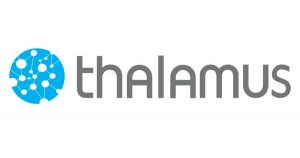![shelf-space_2[1]](https://thalamus.global/wp-content/uploads/2020/04/shelf-space_21.jpeg)
Invest more to boost retail transactions. Is that really productive? The lack of audits and tools that effectively measure at the point of sale can explain why you’re not selling more.
If you can´t measure it, you can´t improve it.
That famous saying by William Thomson Kelvin (1824 – 1907), ever more relevant, today is a guiding principle for the majority of all businesses’ operations, both online and off. Measuring effectively and on time will allow you to improve your product’s penetration into the market, position yourself within your category, and assure return on investment.Volume and mix metrics just aren’t enough anymore.
Selling a lot is still (and will continue to be) a priority, but it’s no longer the only variable that matters. Excellence in execution at the point of sale has become key, and encompasses a more complex set of indicators.A new world of marketing requires new methods
That traditional Retail Audit focus based on statistical sampling, though meaningful for designing macro strategies, leaves aside a number of important -and necessary- angles for the implementation of incentive plans and monitoring of Trade Marketing executions, and focuses on generic indicators that don’t reflect the individual performance of each point of sale. Furthermore, the time cycle of statistical information causes that information, while valuable, becomes available many weeks later, eliminating the chance to make adjustments in real time.Why aren’t you taking full advantage of retailers’ information?
Perhaps you’ve asked yourself: If I’m doing audits in stores, why aren’t I seeing an increase in my sales? The answer is that you’re probably looking at very general indicators that don’t allow you to make the right decisions for each individual point of sale, and that you’re receiving the information at a time more suitable for doing an autopsy than for a diagnosis that would let you take action immediately.Effective retail strategies: What makes a difference
Direct communication with retail assures one part of the success of the measurements. Nevertheless, the real difference is made by implementing automated tools that offer us a comprehensive view of the point of sale in real time. This will provide you with the chance to garner key information at each store, so you’ll have metrics within your reach to design and monitor trade marketing investment plans and sales at outlets. Some important dimensions that you can obtain for each establishment are:- Availability, visibility, stock and price of your products
- Share of space within the category
- Presence of merchandising materials
- Additional spaces negotiated
- Promotion activation
- Competitors’ activities
- Mystery Shopper

